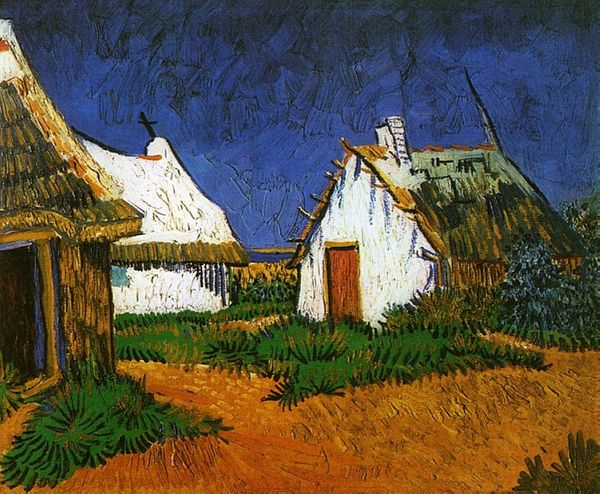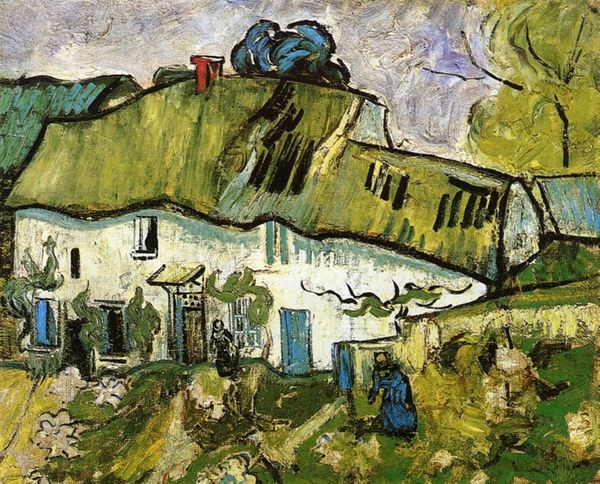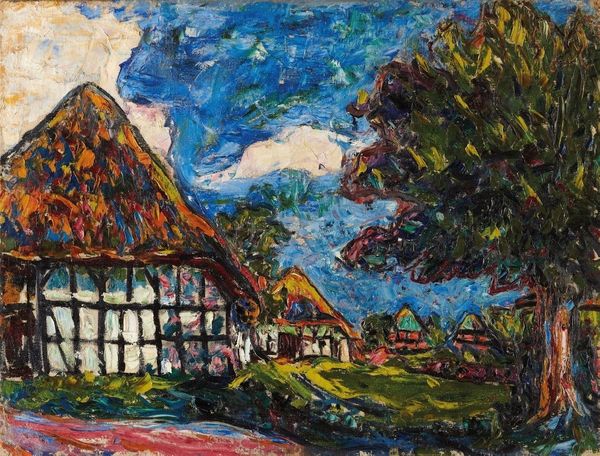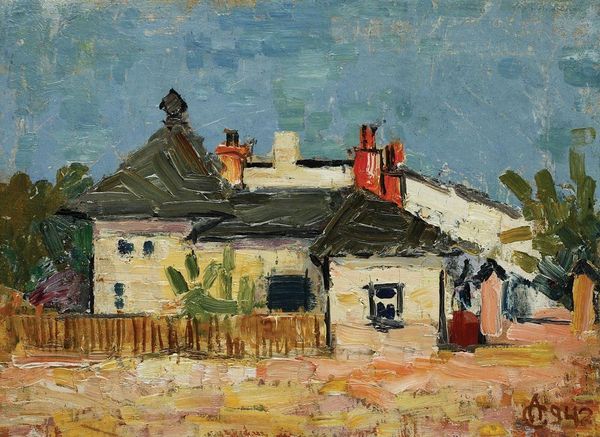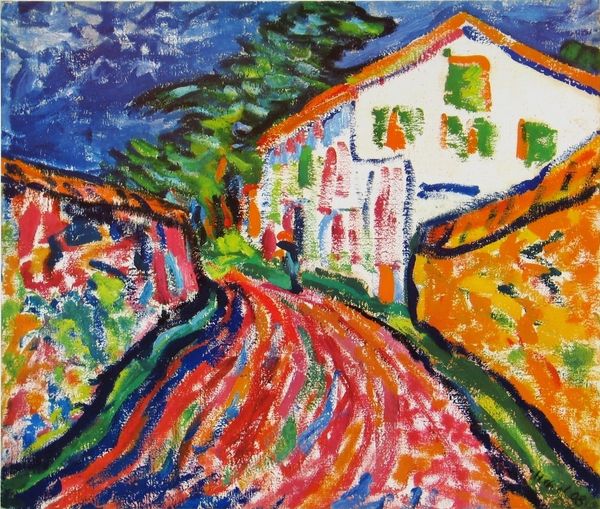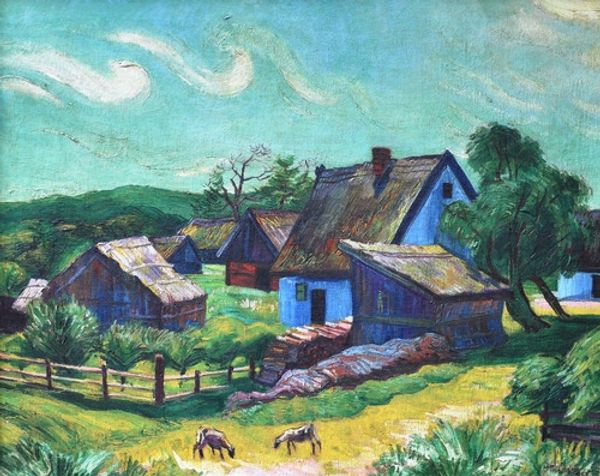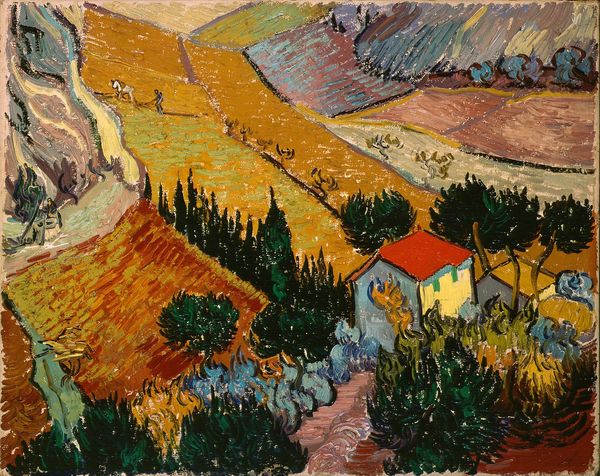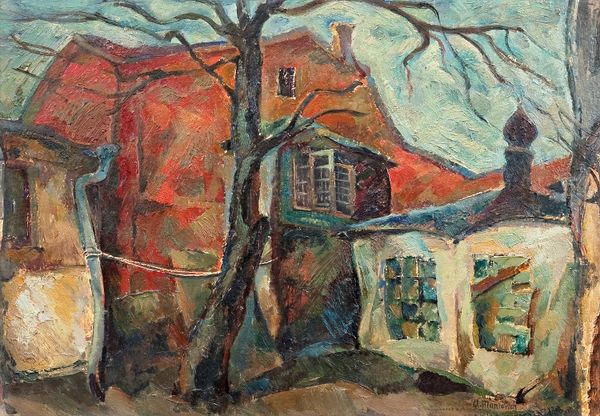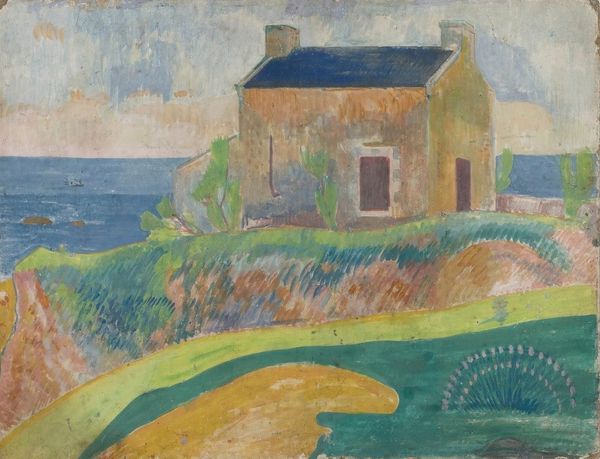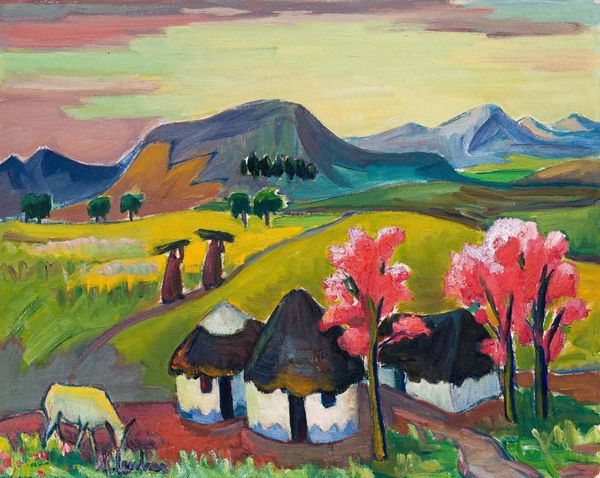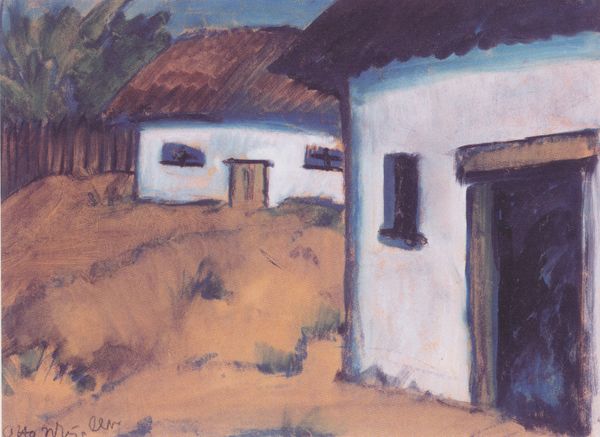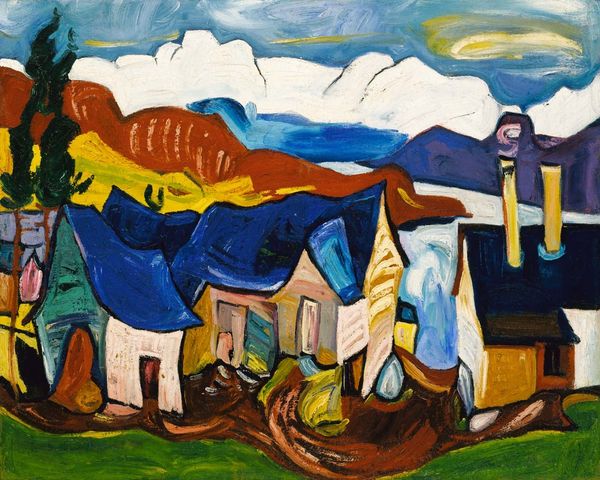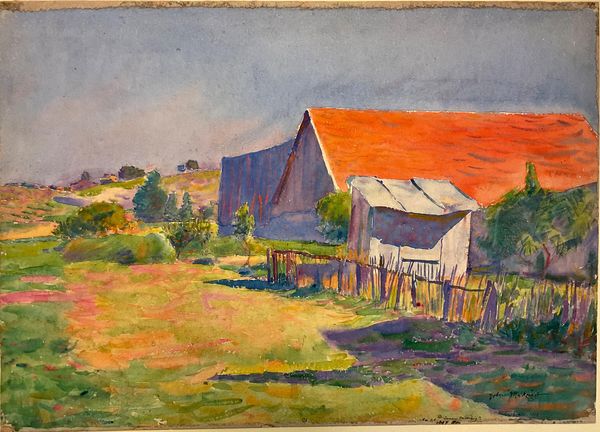
Copyright: Public Domain: Artvee
Art Historian: Here we have Vincent van Gogh’s “Three white cottages in Saintes-Maries,” an oil on canvas painted in 1888. Van Gogh created this scene while in the south of France, capturing his sense of place and experience through the canvas. Art Historian: The sky immediately strikes me. That intense blue pressing down, almost a lid—it makes the little cottages seem very sheltered, like havens against something immense. Art Historian: Saintes-Maries-de-la-Mer, the setting for this artwork, was more than just a picturesque village for Van Gogh; it represented a rural simplicity and a break from the urban life he’d experienced. These cottages were likely humble homes for fishermen and laborers. Art Historian: Yes, I see that. The cottages themselves, their whiteness… it suggests a sort of purity, a cleansing. Juxtapose that with the weathered textures and almost unruly vegetation, and you feel a resilient spirit—a community rooted in a harsh environment. Even the vibrant impasto of the paint seems to imbue these structures with a living energy. Art Historian: Exactly. Van Gogh’s thick application of paint was quite radical at the time. The painting became as much about the paint itself as the subject depicted. We have to remember this was at a time when the French Salon still prized smooth, illusionistic surfaces. Art Historian: Absolutely. The symbolism goes further than surface appearance. Note the doors. Almost ruddy in their boldness, suggesting a vital entrance to another world. Art Historian: Fascinating, your interpretation makes me rethink the cottages within the broader art market; his distinctive style certainly made its way into the art dealer circles in Paris. And what would the reaction to this painting have been during its initial reception? A lot has changed with these scenes over time. Art Historian: Perhaps the vividness was disquieting initially, but his symbols still touch us deeply; the house as the body, and its protective shelter. I feel Van Gogh communicates with the elemental essence of place—shelter against the wild. Art Historian: And perhaps in its continued viewing it continues to allow art to perform its role of providing insights into the experience of life at any place and at any time. Art Historian: And how profoundly his painting captures that moment—a universal image to inspire the depths of the soul.
Comments
No comments
Be the first to comment and join the conversation on the ultimate creative platform.
